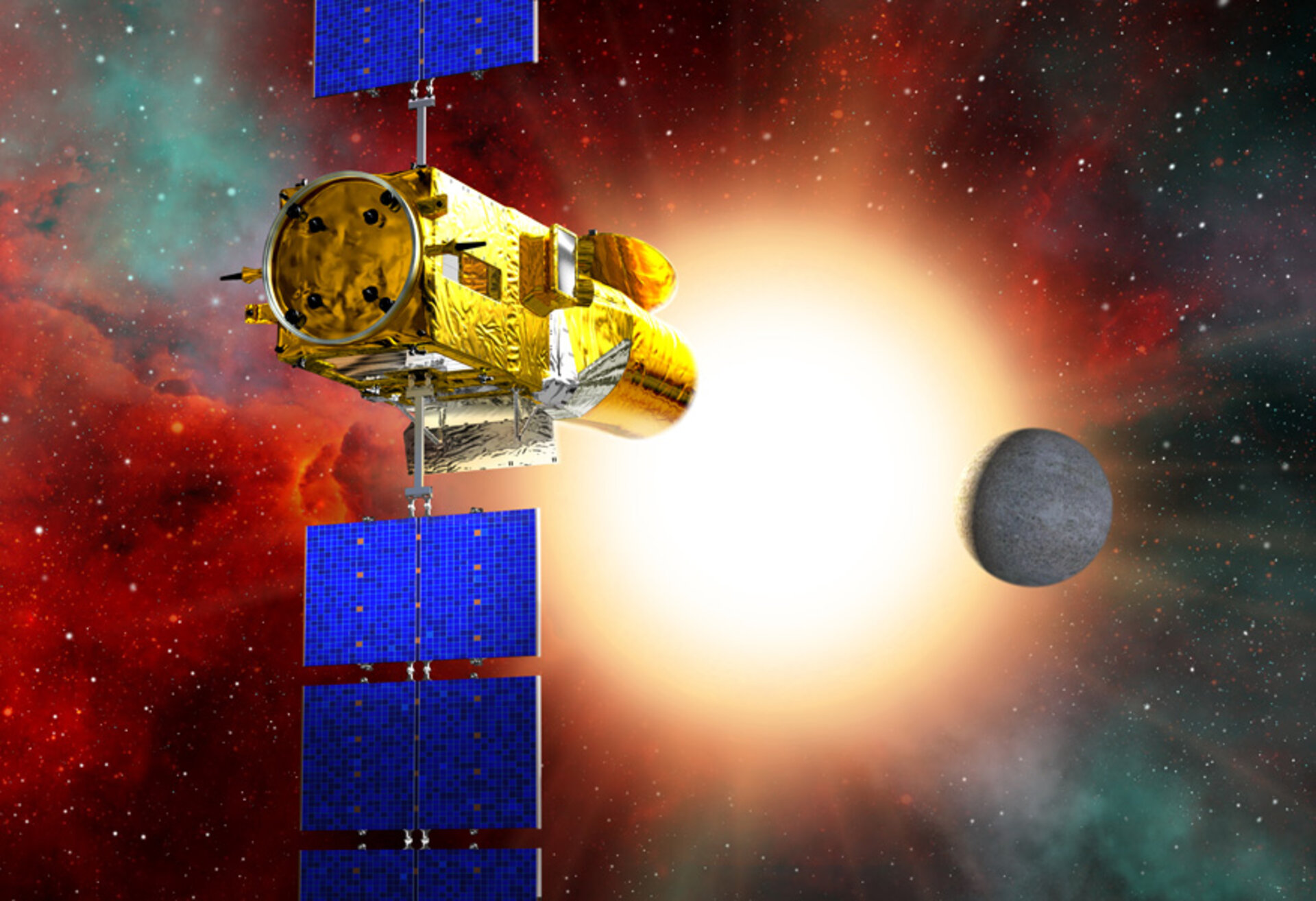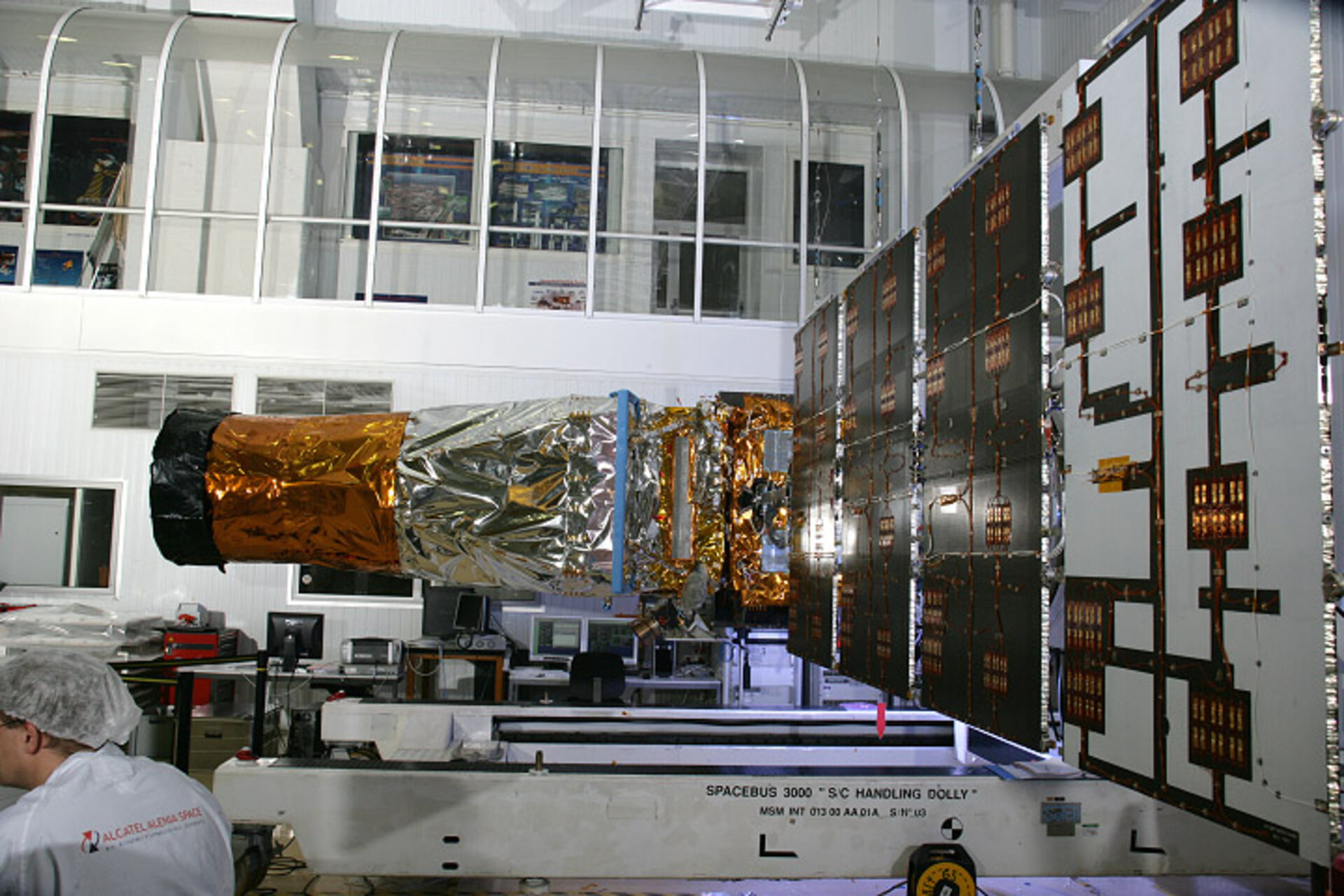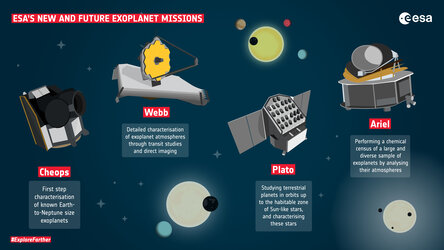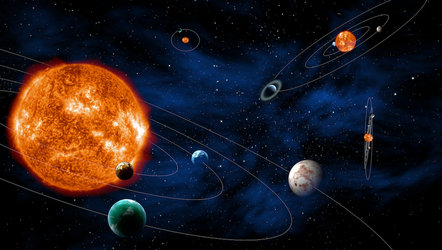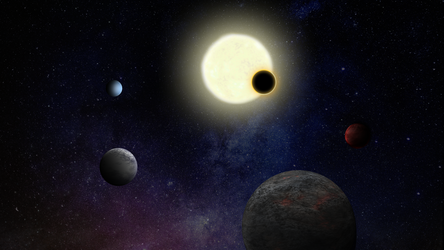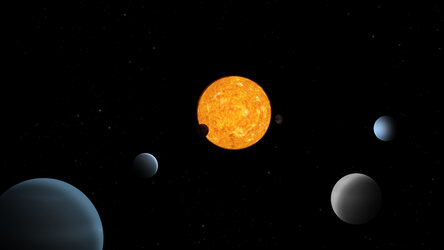Corot overview
Status: Completed
Objectives
- Searching for rocky planets outside our Solar System, Corot was an important stepping stone in the European effort to find habitable, Earth-like planets around other stars.
- By studying the acoustic waves rippling across the surfaces of stars, with waves as high as a few metres, we can penetrate into the so far 'invisible' stellar interiors and learn about the physics of stars. This is the engine driving the most important energy source in the Universe, which creates the environment necessary for life on the surface of planets.
Mission
Corot was the first mission capable of detecting rocky planets, several times larger than Earth, around nearby stars. Planets outside our Solar System are referred to as ‘exoplanets’. It consisted of a 30-centimetre space telescope.
The spacecraft was launched on 27 December 2006, and decommissioned on 17 June 2014.
Corot was a CNES-led mission with ESA participation. The name comes from 'convection, rotation and planetary transits'.
Corot used its telescope to closely monitor the changes in a star’s brightness that comes from a planet crossing in front of it. While looking at a star, Corot was also able to detect ‘starquakes’, acoustic waves generated deep inside a star that send ripples across a star’s surface, altering its brightness. The exact nature of the ripples allows astronomers to calculate the star's precise mass, age and chemical composition.
This technique is known as asteroseismology, and ESA’s Solar and Heliospheric Observatory (SOHO) has been taking similar observations of the Sun for years. The Corot data is therefore essential to compare the Sun with other stars.
What’s special?
From the ground, the only planets detected around other stars have been giant gaseous worlds (Jupiter-like planets), over 10 times the diameter of the Earth. Not affected by the distorting effects of the atmosphere, Corot was the first spacecraft capable of finding worlds made of rocks. Such rocky worlds are smaller than the gas giants but several times larger than the Earth, itself the biggest rocky planet in the Solar System.
When Corot was launched, these alien worlds were expected to exist, but had not yet been detected directly. Every 150 days Corot explored a new field of view, allowing it to discover a total of 33 exoplanets and one brown dwarf (a 'failed star' that doesn't shine).
Corot detected its first extrasolar planet, CoRoT-1b, in May 2007, just three months after the start of the observations. Another notable discovery was the exoplanet CoRoT-7b, discovered in 2009, which became the first exoplanet shown to have a rock or metal-dominated composition.
Corot was the first to detect a starquake in a star other than the Sun in 2008.
ESA is following up on Corot's groundbreaking discoveries with its ever-expanding fleet of exoplanet missions.
Spacecraft
The payload of the Corot satellite consisted of a telescope, two cameras – one for each of the two mission objectives (exoplanet search and asteroseismology) – and the onboard computer processors.
The telescope was made out of two parabolic mirrors, with a 1.1-metre focal length. The field of view was a square of 2.8 × 2.8°, half for the seismology mission, the other half for the exoplanet mission. A prism allowed the telescope to also separate different colours of light, a technique called spectroscopy, enabling scientists to study stellar activity.
Journey
After launch, Corot was placed in a circular, polar orbit that allowed for continuous observations of two large and opposite regions in the sky for more than 150 days each. Within each region many selected fields were monitored in turn. The reason for the oppositely sited regions is that, because of the Earth’s movement around the Sun, the Sun’s rays start to interfere with the observations after 150 days. Corot then rotates by 180 degrees and start observing the other region.
History
Corot was first proposed in December 1996 by the French National Space Agency (CNES). Over the next three years, the project was researched to see if it was feasible. In September 1999, a call for potential European partners was made and in March 2000, CNES gave the green light to carry out Corot.
Partnerships
Corot was led by the French national space agency, CNES. ESA joined the mission by providing the optics for the telescope and testing of the payload. Through this collaboration a number of European scientists were selected as co-investigators in open competition. They came from Denmark, Switzerland, the UK and Portugal. As a result of ESA’s participation in Corot, scientists from ESA’s Member States were given access to the satellite’s data.
The onboard computer processors (Data Processing Units) were manufactured at ESA's European Space Research and Technology Centre (ESTEC) as one contribution of ESA to the mission. The external ‘baffle’ on the telescope was also developed at ESTEC. This device shields the lens from ‘light pollution’ from sources other than those objects at which the telescope is looking.
Aside from ESA, other partners in Corot were Austria, Spain, Germany, Belgium and Brazil.
The ground stations used for Corot were located in Kiruna (Sweden), Aussaguel (France) Hartebeesthoek (South Africa), Kourou (French Guiana), with mission-specific ground stations in Alcantara (Brazil) and Vienna (Austria).


